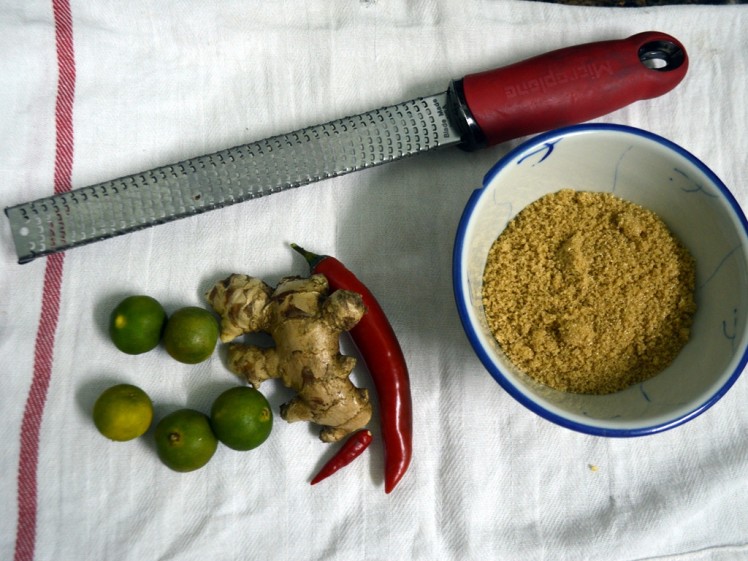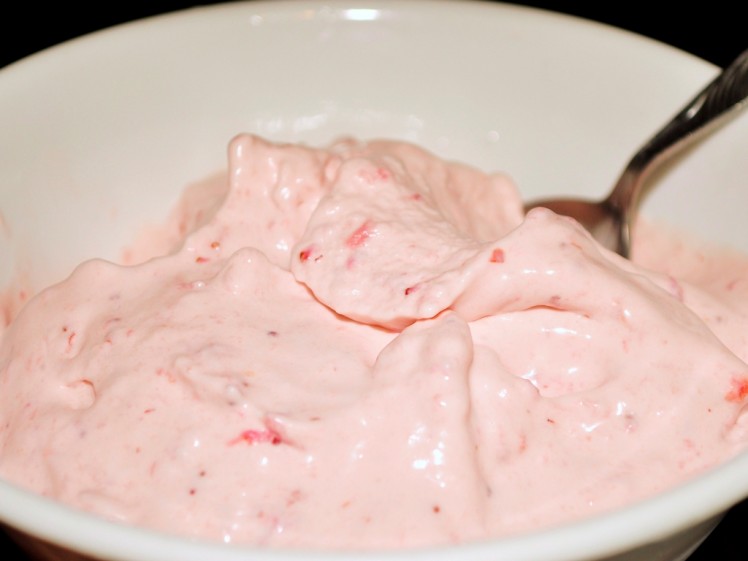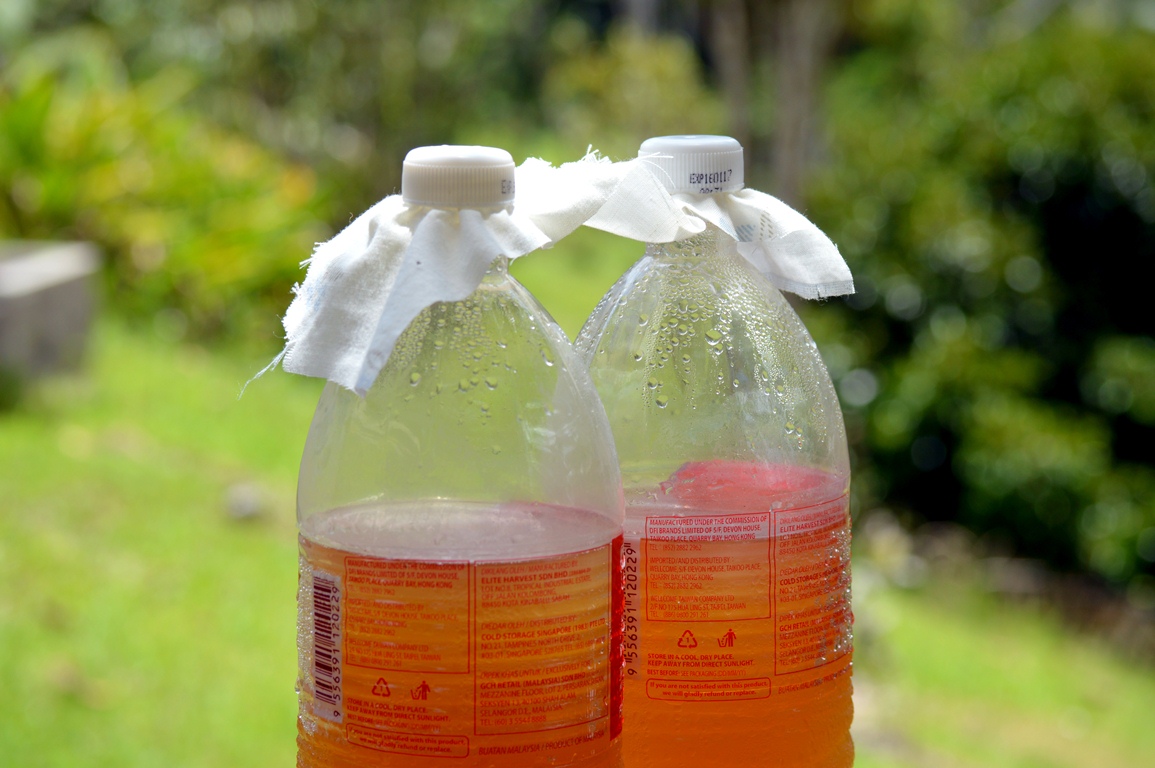This post was written by Alex Sorenson.
For a fun change of pace, give making your own summer treats a try at home. Let Alex Sorenson be your guide to the tasty satisfaction of making homemade ice cream and tangy, spicy ginger ale.
Living in a state of perpetual summer around the equator gives us a convenient excuse for indulging in traditional summer delights whenever we feel like it. Ice cream, for example: a simple pleasure that can provide instant relief from even the most oppressive heat and humidity. Gather friends and family for an old-fashioned afternoon ice cream party and show off whatever novel flavor combinations strike your fancy. While you’re at it, it wouldn’t be a bad idea to whip up some refreshing cocktails with a batch of homemade, zingy ginger ale, though this requires about a week of lead time.
Homemade Ice Cream
Homemade ice cream is markedly better than anything store-bought, allows for endless experimentation with fl avors, and is a fun family activity.
Yield: roughly 2 pints or 900ml
Ingredients:
450 ml (~2 cups) cream
250 ml (~1 cup) milk
133 grams (2/3 cup) sugar
A pinch (1/8 teaspoon) salt
6 egg yolks
Small splash of vodka (optional)
Flavorings – mix and match as you see fit:
• Vanilla: 2 vanilla beans, split and scraped into cream
• Cinnamon: one stick of cinnamon, crushed into pieces
• Mint: 1 cup of mint leaves, chopped
• Pandan: 2 leaves, bruised and knotted
• Fruit (bananas, strawberries, mango, durian, peaches, etc.): 1 cup of pureed fruit
• Spices (black pepper, cardamom, star anise, etc.): 2 tablespoons roughly ground
• Chocolate: 3 tablespoons cocoa added to cream, then finished hot base poured over 1 cup chopped dark chocolate and stirred until melted and combined
• Nuts: 1 cup toasted nuts, steeped in cream for one hour, then blended together, before adding to yolks
• Coconut: substitute coconut milk for regular milk, and add toasted, shredded coconut to finished base
This basic recipe is a blank canvas, to which you can add any flavors. As a general rule of thumb, things like spices, herbs and nuts should be added to the cream and steeped with it to infuse as much flavor, then any pieces are strained out at the end. For fruit, to keep a bright, fresh flavor, puree it and whisk it into the strained ice cream base after cooking and before chilling.
If you want chunks of ingredients in the final ice cream (nuts, diced fruit, cookie dough, chocolate chips, etc.) add them at the very end of the churning, allowing it to churn just long enough to distribute them.
In a medium pot, bring the cream, milk, salt, and half of the sugar to a simmer, then remove from heat. In a medium bowl, whisk the egg yolks and remaining sugar together. Whisking constantly, slowly drizzle the hot cream into the yolks. Whisk the yolk mix back into the rest of the cream in the pot, return to low heat, and gently cook, stirring constantly, until it thickens enough to coat the back of a spoon (around 170 degrees if you have a thermometer).
Strain the mix through a fine mesh strainer into a bowl and chill covered in the fridge for a few hours or overnight. Churn in an ice cream machine, according to its instructions. You can add a small splash of vodka at the very end of the churning, which helps keep the ice cream a bit softer in the freezer. Serve immediately, or store in freezer.
Homemade Ginger Ale Recipe
Homemade ginger ale is spicier and more complex than the commercial stuff , has a low alcohol content, and mixes well with just about any liquor for a zippy cocktail.
Yield: 3 liters
Ingredients:
5 inches ginger
1 long red chili, sliced
2 bird’s eye chilies, halved
Juice of 4 kalamansi limes
1 cup plus 6 tablespoons palm or brown sugar
2 cups water
To make ginger ale, you will first need to start a “plant,” which is similar to a sourdough starter. You are creating an environment to attract and grow wild yeast for the fermentation. Grate one inch of the ginger, including the skin, which will have naturally occurring yeast on it.
Put the grated ginger in a glass jar, along with one tablespoon of sugar, the lime juice, the sliced chilies and the water. Cover the jar with a piece of cloth or a towel and secure it tightly with a couple of rubber bands. Place the jar in a warm place.
Feed your starter for the next five days. Each day, grate another inch of ginger and add it along with a tablespoon of sugar to the jar, and stir to dissolve.
After five days, strain the liquid and discard the old ginger and the chilies. Divide the liquid between two empty, clean plastic soda bottles. Fill the bottles ¾ with water, and add a half cup of brown or palm sugar to each. Screw the caps on and shake to dissolve everything. Place the bottles in a warm place to continue fermenting.
As the ginger ale ferments, it will convert the sugar to alcohol and carbon dioxide. Your bottles will explode if you don’t take precautions. First, always use plastic bottles to prevent a glass bottle disaster. Second, for the first few days of fermentation put a small, thin piece of cloth (a cut up old pillow case works well) over the top of the bottle before screwing the lid over it. This creates enough of a gap to allow the pressure to escape.
Taste the ginger ale daily. You will need to adjust the sugar and ginger level. If it is too weak, grate more ginger and add it to the bottles. If it is too strong for your taste, pour some off into another bottle and dilute with water. The sweetness will decrease as the yeast ferments the sugar, so you may need to add a bit more.
After 3 days, the ginger ale should be mostly fermented. If it is not sweet enough at this point for your taste, add 1/4 cup of sugar, then remove the cloth and tightly screw the lids on. Squeeze the bottles daily from this point on, without opening them. Once they are too hard to compress, gently unscrew the lid to release some pressure, then tighten the lid again. Move the bottles to the fridge, as they are ready for drinking.
The fridge will slow the fermentation process, but not stop it altogether. If you don’t use it right away, continue to check it and release pressure occasionally, or you could have an explosion. If you leave the ginger ale too long, most of the sugar will be fermented and it will lose its sweetness. If this happens, just add more sugar and gently agitate to dissolve.
Read More:
- A Guide on How to Make Your Own Pickles at Home
- How to Make Your Very Own Rice Wine
- How to Cut a Mango
Source: The Expat magazine July 2015
"ExpatGo welcomes and encourages comments, input, and divergent opinions. However, we kindly request that you use suitable language in your comments, and refrain from any sort of personal attack, hate speech, or disparaging rhetoric. Comments not in line with this are subject to removal from the site. "
























Geraldine Ghouse
Thanks…will try this